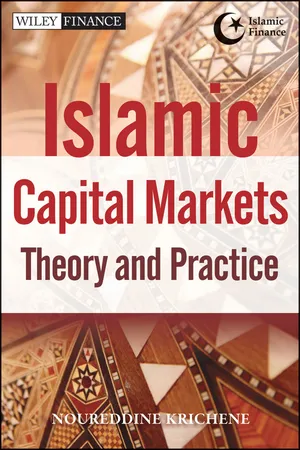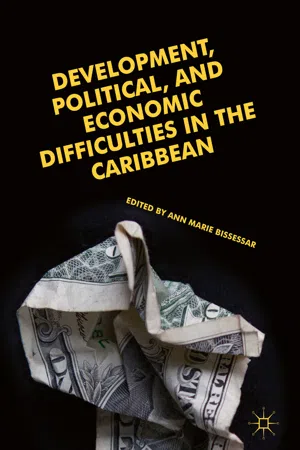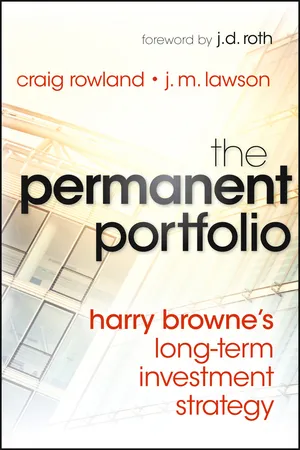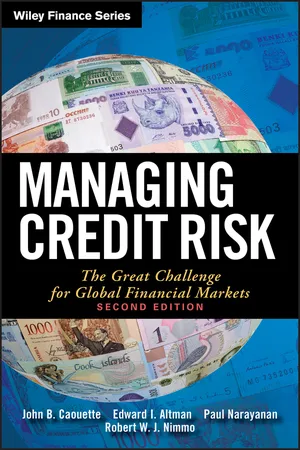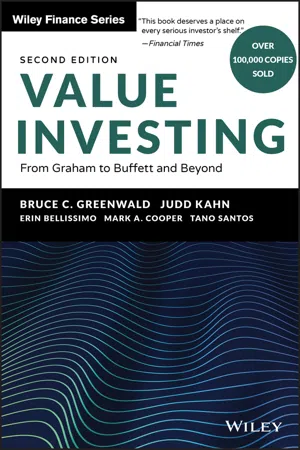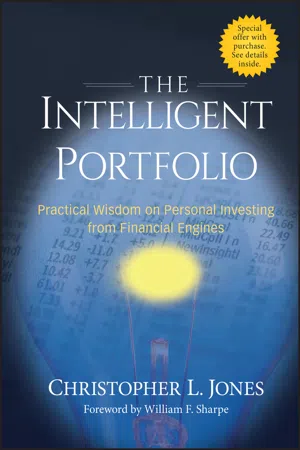Economics
Portfolio Diversification
Portfolio diversification is a risk management strategy that involves spreading investments across different assets to reduce overall risk. By investing in a variety of assets with different risk and return profiles, investors can potentially minimize the impact of any single investment's performance on the overall portfolio. This approach aims to achieve a balance between risk and return.
Written by Perlego with AI-assistance
Related key terms
Related key terms
1 of 4
Related key terms
1 of 3
9 Key excerpts on "Portfolio Diversification"
- eBook - ePub
Islamic Capital Markets
Theory and Practice
- Noureddine Krichene(Author)
- 2012(Publication Date)
- Wiley(Publisher)
Risk–return tradeoff and asset pricing models are essential features of financial analysis and investment decisions. Risk-free assets earn less return than risky assets; the higher the risk born by investors, the higher the expected return of an asset. Financial markets are highly volatile, and therefore risky, and are dominated by speculation and may experience episodes of booms and crashes. In an environment of uncertainty, investors need models for analyzing risk and returns, diversifying portfolios, and computing equilibrium prices for portfolios or individual securities in which they invest their wealth. Asset equilibrium price means an asset is not over- or underpriced. Asset pricing theory is capable of pricing portfolios as well as individual shares that are part of a market portfolio. Portfolio Diversification is akin to the maxim “Don’t put all your eggs in one basket.” Portfolio Diversification has been a fundamental strategy for reducing risk. The risk of a portfolio is reduced as the number of stocks added to the portfolio increases. Diversification provides the foundation for mutual funds, trust funds, and many other types of funds. Portfolio theory as proposed by Markowitz (1952) suggested that investors should not solely select best-performing stocks; they can form a portfolio of wide-ranging stocks with a view to reducing risk.The capital asset pricing model (CAPM) has become an essential tool for pricing stocks and measuring mutual funds’ performance. It is a direct extension of the capital market line to pricing individual securities held in the market portfolio. Diversification means that the risk of an individual stock is substantially reduced. Since the stock is included in the market portfolio, CAPM considers only the contribution of the stock to the market portfolio’s risk in pricing an individual stock. The nondiversifiable risk is known as the beta risk. Similar to the capital market line, the security market line describes the return-risk tradeoff for an individual stock and associates with each stock beta the required expected rate of return for investors to buy the stock. The chapter will show how pricing theory is applied to determine the cost of capital for firms. - Ann Marie Bissessar(Author)
- 2019(Publication Date)
- Palgrave Macmillan(Publisher)
4 These countries utilize the infrastructure, skills, and the institutional mechanisms that are already in place for conducting their traditional activity. In doing so, diversification remains path dependent.Though the extant economic literature tackles the issue of economic diversification and related complexities, we wish to inquire whether it is possible to arrive at an optimum mix of resource allocation between various sectors in an economic system. Our contribution to the literature on economic diversification thus comes from treating the economy as a portfolio of sectors and applying Modern Portfolio Management principles on this portfolio. The aim is to examine whether financial portfolio theory can provide clues towards optimum sectoral allocation of a State’s attention, which precedes other resources.Markowitz (1952 ) and Roy (1952 ) showed the benefits of constructing and optimizing a portfolio of financial assets. The argument is simple—investing money in more than one dissimilar asset tends to reduce the risk of financial loss (Fig. 2.1 ).5Fig. 2.1 Diversification benefitWe draw from their quintessential work and attempt to translate the concept to economic diversification. The premise of our argument is that if an economy can be seen as a composition of individual sectors, then such sectors can be understood as components of an economic portfolio. Then, the algorithm followed for financial portfolio analysis can be theoretically replicated for a portfolio of economic sectors as well. As we proceed through subsequent sections in this chapter, we remain mindful of the fact that financial portfolio theory was designed to arrive at optimum capital allocation for private financial investors to minimize investment risk and/or to maximize reward per unit of risk. A State as an investor may have social, cultural, administrative, political, macroeconomic, and other factors to contend with. Also, while financial assets are assumed to be infinitely divisible (the possibility of buying and selling fractions of assets) under the Capital Market Theory and private investors can choose to leverage their position in a certain asset by short-selling6- eBook - ePub
Understanding Investments
Theories and Strategies
- Nikiforos T. Laopodis(Author)
- 2020(Publication Date)
- Routledge(Publisher)
Chapter 2 ). Then, we discuss, from the conceptual and mathematical points of view, the notions of correlation, covariance and regression (with more illustrations in Appendices A and B). Next, we proceed with the construction of simple portfolios consisting of two risky assets and then augment them by including the risk-free asset. We will then see the differences in the risk/return outcomes from these different portfolios. We conclude with some common diversification fallacies that arise in the asset allocation step of the investment process (following the top-down approach to investing).7.2 The diversification principle
We first defined diversification in Chapter 2 . To refresh your memory, the diversification principle refers to the inclusion of many different risky assets in a portfolio so as to reduce the risk exposure to any particular asset. Here is a simple diversification example that applies to you as a student. In college, you take courses across the curriculum namely, from arts and sciences such as English, mathematics, science, and so on, as well as courses in your chosen field of study (major and/or minor, if any). Furthermore, in your field of study (assume it is finance) you take core courses (such as investments) and electives (such as international finance). By taking so many different courses across several disciplines during your college years, you diversify your knowledge portfolio. As a result, when you graduate you will not only have a well-rounded knowledge on your major (and get the best job) but also on many other areas so that you can converse with people intelligently! Thus, you will have maximized your benefit (potential) and substantially reduced the risk of being socially and personally uncompetitive.At this point, it is interesting to provide a brief historical account on the diversification principle. Before Markowitz’s seminal paper, the market’s wisdom was to “put all your eggs in one basket, and watch it well”, as voiced by Andrew Carnegie, a Scottish-American business man and steel industry giant, in the late 1880s.1 Investors in the early 1900s had few options to invest their money. Banks offered a fixed rate of return and there were a number of industries for stocks and bonds, such as railroads, utilities, and real estate. In 1915, there were few blue chip stock investments and the Dow Jones Industrial Index was comprised of only 12 companies, most of which were in the industrial sector. Benjamin Graham, during the early 1900s, attempted to predict the stock market’s movements (or timing the market) but after huge losses of his fund (during the Great Crash of the 1930s), he changed his advice into consulting the fundamentals or value investing, as we have learned in Chapter 2 - eBook - ePub
- Frank J. Fabozzi, Dessislava A. Pachamanova(Authors)
- 2016(Publication Date)
- Wiley(Publisher)
Modern Portfolio Theory (MPT). In 1990, Markowitz was awarded the Nobel Memorial Prize in Economic Sciences in recognition of his seminal work.As we will see in this chapter, the definition of risk as the variance of returns leads to the conclusion that diversification is preferable as an investment strategy. Markowitz's framework in essence quantified the conventional wisdom of “not putting all of your eggs in one basket.” Mathematically, the portfolio variance is a sum of terms including both the variances of the returns of the individual assets and the covariances (equivalently, the correlations) between those returns. Investing all of your money in assets that are strongly correlated is not considered a prudent strategy, even if individually each of the assets appears to be a “winner” based on preliminary analysis. If any single asset performs worse than expectations, it is likely, due to its high correlation with the other assets, that the other assets will also perform poorly, decreasing substantially the value of the entire portfolio.In this chapter, we explain the basic assumptions in Markowitz's model. We also show that the mean-variance approach is consistent with two different frameworks: expected utility maximization under certain conditions, and the assumption that future security returns are jointly normally distributed. It is worth noting that in recent years, especially in light of the financial crisis of 2007–2008 when asset class return correlations moved closely together, the concept of diversification has been questioned and reconsidered. Specifically, practitioners and academics have been interested in new ways to define diversification and measure the degree of diversification in a portfolio, leading to substantial interest in risk-based allocation strategies. The last section in this chapter (Section 8.7 - eBook - ePub
The Permanent Portfolio
Harry Browne's Long-Term Investment Strategy
- Craig Rowland, J. M. Lawson(Authors)
- 2012(Publication Date)
- Wiley(Publisher)
truly diversified in 2008 did just fine.The Permanent Portfolio utilizes strong diversification because it approaches the idea of diversification from a very different, and more sensible, perspective than many other investment strategies. Before we discuss the Permanent Portfolio's approach to diversification, however, let's discuss how other diversification strategies can run into problems.When Diversification Fails
When diversification fails it is normally related to several key factors:1. The strategy took too much risk in a single asset class.2. The portfolio held assets that ultimately were exposed to the same types of risk.3. The strategy was designed based upon false assumptions about asset class correlations.4. The portfolio held no hard assets.5. The portfolio had little or no cash reserves.In order to understand what solid diversification involves it is important to gain a better understanding of why these factors are allowed to creep into the design of investment strategies in the first place.Taking Too Much Risk in One Asset Type
Many investors imagine that their portfolios are diversified, but the reality is that investors often concentrate too much money into one particular type of asset, typically one that they personally favor. Often such portfolios are based on little more than chasing past returns (though the investor may not actually be aware of it, especially if he is acting on the advice of an investment manager). If the bet on the individual asset fails, the portfolio fails.Remember the idea of expectations that was discussed in Chapter 4. The key point from that discussion is worth repeating here: Any investment, even your favorite, is under no obligation to provide you with any minimum level of return, and it may not perform according to your timeline or expectations. Investors are strongly encouraged to get the idea out of their heads that their favorite asset is always going to perform well going forward, because it may not happen according to their plan (and it may not happen at all). - eBook - ePub
Understanding Investments
Theories and Strategies
- Nikiforos T. Laopodis(Author)
- 2012(Publication Date)
- Routledge(Publisher)
4. Finally, once the list is complete, disclose this information (when needed) to all involved parties like shareholders, regulators, and academicians. Update the information periodically as needed.Markowitz concluded by reminding us that “when risks are correlated, no amount of diversification will eliminate risk.” Thus businesses should understand that such complex financial instruments are based on assumptions and on model risk, and regulators should understand that such instruments (particularly CDs) should be treated as insurance products and thus subject to regulation and supervision.Source : Harry Markowitz, Proposals concerning the current financial crisis, Financial Analysts Journal 65, Jan/ Feb 2009, 1.KEY CONCEPTS
The diversification principle refers to the inclusion of many assets in a portfolio so as to reduce the risk exposure to any particular asset.The naive or random diversification refers to randomly selecting securities to be added to the portfolio without regard to their risk/return characteristics.Efficient diversification refers to explicitly recognizing and using estimates of securities’ risks and returns along with their correlations to maximize the diversification potential of a group of securities.Covariance , in an absolute sense, measures the extent to which two or more securities covary or comove.The correlation coefficient measures the direction and strength of the relationship between the movement of two securities.Asset allocation - eBook - ePub
Managing Credit Risk
The Great Challenge for Global Financial Markets
- John B. Caouette, Edward I. Altman, Paul Narayanan, Robert Nimmo(Authors)
- 2011(Publication Date)
- Wiley(Publisher)
2 which are generally based on judgment. This chapter and the next deal with the questions of how portfolio concentrations can be measured objectively and how a value or cost can be assigned to them. After introducing the classic portfolio theory, we consider the problems that arise in adapting it to banking and insurance assets. Then we review the alternative approaches that have been taken.DIVERSIFICATION IS GOOD, OTHER THINGS BEING EQUALThe very mention of a portfolio approach brings to mind Harry Markowitz and the theory of diversification (Markowitz 1959). The idea behind Markowitz’s theory is the notion, that while the riskiness of the return from a security may be characterized by its variance, the comovement or covariance among a group of securities will influence risk and return from a portfolio of securities. Using the historical variance-covariance matrix as representative of the future, Markowitz formulated the classic quadratic optimization problem, where the objective function is couched in terms of the resulting portfolio’s expected return and the variance of return, subject to the constraint that the weights invested in the securities add up to one. The procedure led to finding the portfolio with the highest return for a given level of risk, or the portfolio with the least risk for a given level of return.Although this is a highly simplified depiction of the investment model, it is introduced here because insights from portfolio theory have had profound effect on subsequent development in the theory and practice of financial management. Variability in investment returns may be minimized by investing in assets that are negatively correlated with one another. One classic pedagogical example is the notion of investing in a company that manufactures skis and in another that manufactures swimsuits. Since the first company prospers when it is snowing and the second when the sun is shining: the combination of these investments will minimize overall earnings variability of a portfolio that is invested in these two companies. As more and more securities are added to a portfolio, even the mere absence - eBook - ePub
Value Investing
From Graham to Buffett and Beyond
- Bruce C. Greenwald, Judd Kahn, Erin Bellissimo, Mark A. Cooper, Tano Santos(Authors)
- 2020(Publication Date)
- Wiley(Publisher)
For a diversified portfolio of stocks purchased with an adequate margin of safety and using appropriately low levels of leverage, the remaining risks are those that affect economies and financial markets as a whole. Permanent impairment of capital at this level typically is due to either markets at unsustainable price levels (Japan in the late 1980s) or national economies in terminal meltdown (Venezuela in the middle 2000s). As the recovery of securities markets in the wake of the 2008–10 global economic crisis has shown, economies in well-functioning national environments are extraordinarily resilient. This may be due in part to government commitments to do whatever is required to sustain macroeconomic stability. There were wide variations in the degree and nature of government responses to the 2008–10 crisis, and yet financial markets, with few exceptions, have recovered. This experience suggests that for the long run, comprehensive economic and financial impairment will be rare. Despite this sanguine view, there will always be areas and assets at risk of permanent damage. Unanticipated inflation of any size and duration is rarely, if ever, followed by equivalent price declines. Under these circumstances, fixed-income assets with long maturities suffer significant and permanent losses, as institutions that relied on long-term bond income in the late 1950s found to their enduring cost. Equity markets can also experience more than decade-long periods of falling or flat valuations. Although the resilience of the underlying economies and businesses has usually ensured an adequate long-run return, low interim results can inflict serious pain on investors. It is prudent, therefore, to secure some protection against long-lived but less than permanent macroeconomic impairment.Global Portfolio Diversification should provide protection against the possibility of national economic difficulties. All investors, especially those in relatively unstable emerging societies, need some degree of global diversification. But as the 2008 crisis demonstrated, global markets are increasingly integrated, and national market returns have become more highly correlated. This convergence has meant that even global diversification will not provide complete protection against national macroeconomic dislocations.Managing Global Macroeconomic Risks
For a disciplined value investor who is well diversified and selects individual investments with an adequate margin of safety, management of macroeconomic risks will generally be a matter of significant but secondary importance. This position is in stark contrast to the practice of adherents of Modern Portfolio Theory, for whom managing macroeconomic risk is a primary concern. This MPT approach involves detailed attention to allocations among narrowly defined asset classes and to portfolios selected to have tailored exposures to intricately, and usually statistically, defined macro “risk factors” (so-called factor investing). Most value investors think of macroeconomic risk as falling into one of two categories. First are inflationary environments, periods of relative prosperity for business but with high and unpredictable price inflation. Second are deflationary periods in which prices are stable or even falling, but overall business conditions and growth rates are depressed. Inflation and deflation can actually co-exist. Stagflation, weak growth and high inflation, characterized many developed economies in the 1970s and 1980s. Still, it is more useful to think of managing these two risks separately. - eBook - ePub
The Intelligent Portfolio
Practical Wisdom on Personal Investing from Financial Engines
- Christopher L. Jones(Author)
- 2010(Publication Date)
- Wiley(Publisher)
To be fair, there may be other reasons why you would prefer to hold a broadly diversified asset class portfolio other than maximizing expected return for a given level of volatility. For instance, you might take the point of view that there are certain economic conditions that might cause big dislocations in the performance of asset classes that normally have high correlations. If there were the possibility of such events, then erring on the side of more asset class diversification would make sense. This argument probably has more credence for diversifying across domestic and international equity asset classes. It is at least plausible that there might be conditions under which the performance of domestic and foreign stock markets may significantly diverge in times of economic stress, though this is increasingly unlikely with continuing global integration of financial markets.DIVERSIFICATION AIN’T WHAT IT USED TO BE
All of this is to say that the benefits of asset class diversification depend on how correlated the underlying asset classes are. In a world where you are investing in assets that don’t move together very often, the benefit of diversification can be considerable. But if all the investment choices available to you always tend to move together, say with the global market portfolio, the benefit of diversifying across multiple investments is going to be muted. This may sound like a bad thing for investors, but it really suggests that the need for diversification is less pronounced than it used to be. Decades ago, it was possible to find markets where the correlations with the overall global market were relatively low (e.g., developing countries). While there are still stock markets with relatively low correlations with the overall global market, they are increasingly hard to come by. The culprit is globalization of trade and the integration of financial markets. As the economies of various countries become increasingly integrated with the world market, the opportunities for diversification, at least across the equities of different countries, become less prevalent. The headlines today are filled with stories of how events in one market have an impact in markets across the globe. For instance, the sub-prime mortgage crisis in the United States in 2007 had ramifications for financial service firms and monetary policy around the globe. It is becoming increasingly difficult to find asset classes or different countries with low correlations with the overall global market. When assets are more highly correlated, then you don’t need as many of them to create a diversified portfolio. And in the future, we should expect the assets of different countries to become even more highly correlated.
Index pages curate the most relevant extracts from our library of academic textbooks. They’ve been created using an in-house natural language model (NLM), each adding context and meaning to key research topics.
Explore more topic indexes
Explore more topic indexes
1 of 6
Explore more topic indexes
1 of 4
